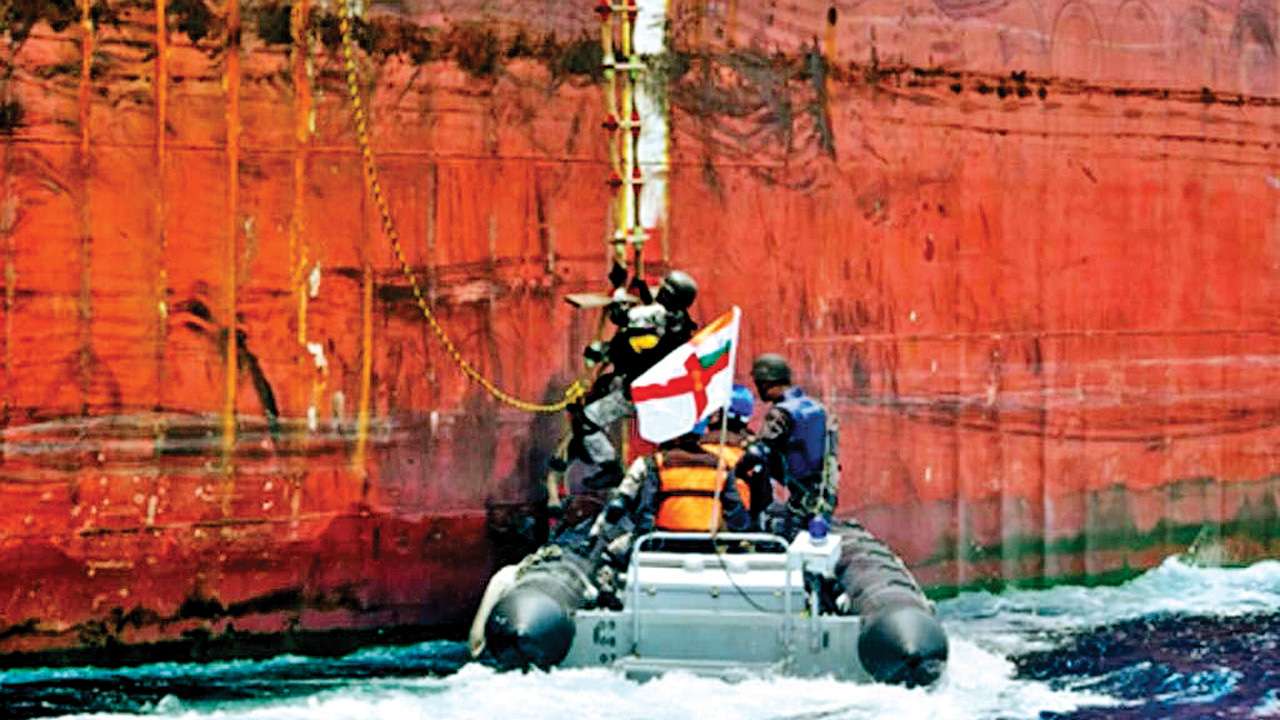A standoff between the US and Iran could have implications for Indian interests in the Persian Gulf

Jun 29, 2019

The Indian Navy did some yeoman service a few years ago by deploying its ships to escort Indian and international merchant shipping in the North West Indian Ocean.
The threat was from Somali pirates, who had made hijacking of merchant vessels their profession with demands for huge sums as ransom. The Indian Navy displayed professionalism in a difficult task at sea. Now the Indian government has taken an early decision to deploy naval ships once again in view of the deteriorating situation in the Persian Gulf.
Two Indian Navy ships have been deployed in the waters of the Middle East. INS Chennai and INS Sunaina have sailed to the Gulf of Oman and in the vicinity of the Persian Gulf to escort and provide necessary security to Indian merchant shipping and energy tankers.
The decision of the government to preempt problems that could arise out of the potential turbulence in the Persian Gulf, though apt, needs to be comprehended from the larger security perspective.
Nearly 46% of India’s energy needs come from this region. Of late, the Persian Gulf region has been strategically unstable due to the steadily deteriorating standoff between the US and Iran.
After President Trump withdrew from the Iran P5+1 Nuclear Deal of 2015 and re-imposed sanctions on it, he has pulled out the stops to carry out a range of activities to weaken Iran economically and thereby force such circumstances as to engineer internal turmoil and bring about a regime change.
The US has adopted a strategy of brinkmanship by other actions. It has evacuated all families of US diplomats from Baghdad, moved an aircraft carrier group and air force bombers closer to the scene and sent a battery of Patriot missiles to the theatre.
US National Security Adviser, John Bolton, does not hold back his threats of war, which are made on an everyday basis.
A serious attempt at war will probably take greater US deployment, but the chances of an accidental initiation cannot be ruled out. All the above is related to brinkmanship.
How does this apply to the threats to Indian shipping bringing energy needs from the Gulf region to India? Iran would not aim to fight (if at all) it’s militarily and economically much superior adversary through direct confrontation, but with the help of thousands of proxies, it controls in the Gulf region and Yemen.
From Lebanon through Syria and Iraq, Iran has strong control over the Levant (the broad swathe of territory connecting the Middle East to Europe) and is supported by Russia.
It will fight the irregular way, letting loose proxies into the Gulf zone, which could mean targeting of US resources in Saudi Arabia, Qatar and UAE. It will depend upon the turbulence created in the greater Middle East hinterland rather than just the Persian Gulf.
When an irregular war of such proportions threatens stability all over, the proxies will target even shipping to add to the turbulence and attempt to internationalize the situation to a great extent.
This thought process gets substantiated by the fact that recently, two oil tankers, one a Norwegian-owned tanker Front Altair, along with the Singapore-owned ship Kokuka Courageous, were attacked at sea in the Persian Gulf causing some harm to both.
Till date despite investigations, no foolproof evidence against anyone exists. Who are these proxies and how are they controlled? The Iranian Revolutionary Guard Corps (IRGC) is the strategic arm of the Iranian armed forces, trained for war across the borders. It has its truck with Hezbollah, Hamas, the Syrian rebels, Iraqi Shias and the Yemeni Houthis. The concept is to keep these proxies well supplied, financed and motivated. This is an example of asymmetric war, which many weaker nations can always adopt for effect.
Indian shipping could be affected in two ways. First, in a generic way, all the threats in the region could manifest against the safe movement of international shipping. Second, specific threats could come alive at the behest of adversarial nations.
It is not outside the realm of imagination that India’s adversaries such as Pakistan will not waste a moment to grab an opportunity to target Indian resources. Pakistan has harboured and nurtured friendly terrorists to realize that the emerging environment of instability and the rampant use of proxies in the Gulf region, throw up ample opportunities against Indian interests and resources.
The Indian government is primarily exercising extreme caution against both contingencies. The Norwegian and Singapore tankers had no connection with the standoff except that they were carrying the commodity most affected by the crisis, oil.
A similar attack on an Indian tanker or any ship carrying oil for India without any established signature of the perpetrators of such an act would send the price of insurance and shipping skyrocketing with adverse effects on the Indian economy.
That is what India’s detractors would desire as a part of the hybrid proxy war. Deniability here would be high in view of the ongoing escalation and more such targets could be under attack in the near future.
Naval escort of energy-bearing tankers would essentially involve close surveillance over the waters along the sea lines of communication through helicopters and satellites with adequate capability to respond against small boats approaching standoff distances.
The Indian Navy has adequately experienced this from its anti-piracy role and the counter-terror operations at sea that it has been carrying out in a much more focused way since 26/11.
It is unlikely that Iran and the US will go to war, but the situation created by the threat of war has thrown up ideas, which may be here to stay for some time. Measures to offset threats to Indian shipping will probably have to last well beyond the current situation to ensure India’s energy security.
The author commanded the 15 Corps in J&K
